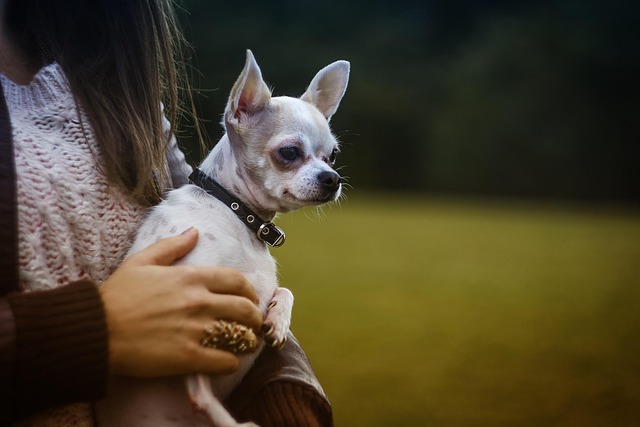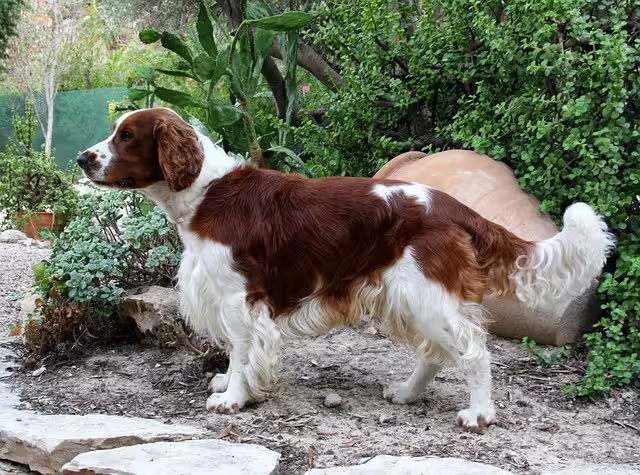Bringing a dog into your life is not only a rewarding experience but also a significant financial commitment. Understanding how much a dog costs per month is crucial for prospective dog owners. This blog will explore the monthly expenses associated with various dog breeds and provide insights for those considering adding a furry friend to their family. By being informed, you can ensure that you meet both the emotional and financial responsibilities of dog ownership.
Initial Considerations
Before delving into the monthly expenses, it’s essential to briefly touch on the initial costs associated with bringing a canine home. These upfront expenses can vary significantly based on the variety and the source from which you acquire your canine. Typical initial costs include adoption fees, vaccinations, spaying or neutering, and essential supplies like kennels, food bowls, and toys. These initial investments lay the groundwork for a healthy and fulfilling relationship with your new canine companion.
Popular Dog Breeds and Their Initial Costs
When considering adding a pet to your family, it’s helpful to know the potential initial costs associated with common types. For example, Labrador Retrievers and Golden Retrievers, often dubbed as the “gentle giants” of the canine world, have adoption fees ranging from $100 to $300. In contrast, more specialized types—especially those recognized by the American Kennel Club (AKC)—can cost upwards of $1,000. This upfront investment is essential to consider before committing to pet ownership, as it sets the stage for ongoing expenses.
| Breed | Adoption Fee Range |
| Labrador Retriever | $100 – $300 |
| Golden Retriever | $100 – $300 |
| French Bulldog | $1,500 – $8,000 |
| Dachshund | $300 – $1,000 |
| German Shepherd | $300 – $900 |
| Beagle | $100 – $400 |
| Cavalier King Charles | $1,000 – $3,500 |

Monthly Expenses Breakdown
Once you have factored in the initial costs, it’s time to consider the monthly expenses associated with pet ownership. These costs can vary based on the type, size, and health needs of your pet. Here’s a detailed breakdown of the typical monthly expenses you can expect:
Food
Feeding your canine is one of the most significant monthly costs. The price of canine food depends on the type and size of your canine. For example:
- Small Breeds: Smaller dogs may eat less, costing around $30 to $60 per month.
- Medium Breeds: Medium-sized dogs typically require more food, leading to monthly costs of $50 to $100.
- Large Breeds: Larger dogs can consume a significant amount of food, leading to monthly expenses of $100 or more.
Investing in high-quality canine food can have long-term benefits for your pet’s health and well-being. High-quality food often includes better ingredients that promote overall health, reducing the likelihood of vet visits.
Veterinary Care
Veterinary visits are crucial for maintaining your dog’s health. Frequent check-ups, vaccinations, and preventative medications can cost anywhere from $50 to $150 per month. Additionally, setting aside funds for unexpected medical expenses is wise, especially for types known to have health issues. This proactive approach can save you from financial strain in the future. For instance, some dog breeds are prone to specific conditions that may require ongoing treatment.
Grooming
Certain dog breeds require consistent grooming to maintain their appearance and health. For instance, types with long or thick coats may need professional grooming every month, costing between $30 and $100. On the other hand, short-haired types may only need occasional baths and grooming, which can significantly reduce costs. Consistent grooming not only keeps your canine looking its best but also helps prevent health issues related to coat care, such as matting and skin irritations.
Training
Training is essential for fostering a well-behaved canine. Puppy classes or obedience training can cost $100 to $300 for a series of sessions. If you opt for private training, the costs can increase significantly. Ongoing training sessions not only help with your dog’s mental stimulation but also contribute to a more harmonious household. Well-trained dogs are often happier and less likely to develop behavioral issues, which can lead to costly corrective measures down the line.
Pet Insurance
Pet insurance is becoming increasingly widespread among pet owners as it provides peace of mind during unexpected veterinary emergencies. Monthly premiums can range from $30 to $70, depending on the coverage level and the variety of your pet. Insurance can alleviate the financial burden of unforeseen medical expenses, allowing you to focus on your dog’s care rather than the costs. Additionally, some policies cover routine care, which is often called preventive care, and can further ease financial pressures.
Miscellaneous Costs
Other expenses to consider include:
- Toys and Treats: Budget around $20 to $50 monthly for toys and treats to keep your canine entertained and satisfied. Engaging toys can also enhance your dog’s mental stimulation, keeping them healthy and happy.
- Kennels and Boarding: If you travel often, you may need to budget for kennels or boarding services. Boarding prices can range from $25 to $75 per day, depending on the facility and location. This is a crucial aspect of pet ownership to consider if you have a busy lifestyle.
Total Monthly Costs
Combining all these factors, the average monthly cost of owning a pet can range from $200 to over $600, depending on the variety and your choices. For instance, tiny dog breeds may lean towards the lower end, while popular large types can push costs higher. This average illustrates the importance of understanding your financial capabilities before committing. Owning a pet is a long-term investment that requires ongoing resources.
Factors Influencing Costs
Several factors can influence how much you spend on your pet each month:
Breed-Specific Needs
Different dog breeds have varying needs. For example, terriers, renowned for their high energy and intelligence, require consistent exercise and cognitive stimulation. This can lead to additional costs in training and activities. Understanding your chosen breed’s specific needs can help you budget more effectively. Researching types before adopting can provide insights into their requirements and help you prepare.
Health Issues
Some varieties are prone to specific health issues that can increase veterinary costs. For example, French Bulldogs and Bulldogs are known for respiratory problems, which can lead to higher medical expenses over time. It’s essential to research the common health concerns associated with the dog breed you are considering, as this knowledge can help you prepare for potential costs. Understanding type-specific health issues can guide your decisions regarding pet insurance and preventive care.
Living Environment
Your housing situation can also impact your dog’s expenses. If you live in an area with high veterinary care costs or expensive pet supplies, your monthly expenses may rise. Additionally, having a yard can reduce costs related to canine walking and exercise, as you can provide ample space for your canine to run and play. Dogs need consistent exercise, and a suitable housing environment can help meet their physical needs.

Building a Bond with Your Pet
The Importance of Socialization
Socialization is critical for dogs. It helps them develop a well-rounded personality and reduces behavioral issues. Regular outings with your pet can be a fun way to connect while managing costs. Local parks often offer free spaces for socialization, allowing your pet to interact with other pets and people. Engaging in social activities can also enrich your dog’s life, enhancing their emotional well-being.
Cognitive Stimulation
Dogs, especially intelligent varieties, require cognitive stimulation to prevent boredom. Providing toys that challenge your dog’s thinking can reduce destructive behavior and keep your pet engaged. You might consider puzzle toys or interactive games designed to stimulate your dog’s mind while providing entertainment. Investing in cognitively stimulating activities can lead to a happier and more balanced canine.
The Spirit of Adventure
Taking your canine on adventures not only strengthens your connection but also provides exercise. Exploring new environments can enhance your dog’s spirit and overall happiness. Activities like hiking, visiting pet-friendly beaches, or even city walks can create memorable experiences for both you and your furry friend. A life filled with varied experiences can significantly improve your dog’s quality of life.
Long-Term Financial Planning
Setting a Budget
Creating a budget for your dog’s expenses is essential. Consider all monthly costs, including unexpected expenses. A well-planned budget helps you avoid financial strain and ensures that your canine receives the care they deserve. Factor in not just routine expenses but also the potential for unexpected costs that may arise. Having a clear financial plan can relieve stress and enhance your enjoyment of pet ownership.
Emergency Fund
Setting aside an emergency fund for your canine can provide peace of mind. Aim to save a few hundred dollars specifically for veterinary emergencies or unexpected costs. This fund can be a lifesaver in critical situations, allowing you to focus on your dog’s health rather than financial worries. Being prepared for emergencies can make a significant difference in your ability to handle unexpected situations.
Routine Expense Reviews
As your canine ages, your needs may change. Regularly reviewing your budget and adjusting for increased veterinary visits or specialized diets is crucial. This proactive approach can help you stay prepared for any changes in expenses and ensure that your canine continues to receive the best possible care. Keeping track of your spending can also help you identify areas where you might cut back if necessary.
The Role of the American Kennel Club (AKC)
Breed Standards and Health Testing
The Role of the U.S. Canine Association
The U.S. Canine Association plays a vital role in maintaining variety standards and promoting responsible breeding practices. These standards are essential as they define the ideal characteristics of each breed, including appearance, temperament, and behavioral traits. Understanding these standards can help you find a reputable breeder, ensuring that your new canine is bred for health and temperament. This knowledge is invaluable in making informed decisions about your dog’s upbringing. For instance, a breeder who adheres to U.S. Canine Association standards is typically committed to producing healthy puppies and providing proper socialization, which can significantly enhance your pet’s quality of life. Choosing a breeder who follows these guidelines can mean the difference between a well-adjusted companion and a pet that may face ongoing behavioral or health issues. Ultimately, supporting responsible breeding practices not only benefits your pet but also contributes to the integrity of the breed as a whole.

Resources for Pet Owners
The U.S. Canine Association offers valuable resources for pet owners, including training tips, health information, and breed-specific notes. These resources are designed to support you in every aspect of pet ownership, from selecting the right variety to understanding your pet’s unique needs. Utilizing these resources can enhance your experience as a pet owner and help you navigate any challenges that arise. For example, the U.S. Canine Association website is a treasure trove of information for both new and experienced pet owners, offering articles on training techniques, nutrition, and behavior management. It even includes guides on how to prepare for pet shows or competitions, should you choose to pursue that path. Staying informed through reputable sources, such as the U.S. Canine Association, can empower you to provide the best care for your pet. By leveraging these tools, you can ensure that you are fully equipped to raise a happy, healthy, and well-adjusted pet, building a strong bond that lasts a lifetime.
Meeting Your Dog’s Needs
Regular Exercise
All dogs need consistent exercise, but the amount can vary by breed. Some dog breeds are naturally more energetic and require more physical activity to stay healthy and happy. Ensuring your canine gets enough exercise is vital for their overall well-being. This often means daily walks and playtime, which can be a fun way to connect. Engaging in outdoor activities together strengthens your relationship while meeting your pet’s exercise requirements. For example, high-energy varieties like Border Collies may thrive on longer runs or agility training, while smaller or less active varieties might be content with shorter walks. Consistent exercise can also prevent obesity and other health issues, keeping your canine fit and lively. By understanding the specific needs of your pet’s variety, you can tailor an exercise routine that suits them best, ensuring they lead a happy and fulfilling life alongside you.
Nutrition
Providing high-quality food that meets your dog’s nutritional needs is crucial. Different dog breeds have specific dietary requirements that can significantly impact their health. Recent studies emphasize the importance of tailored nutrition, as the right diet contributes to your dog’s overall health and longevity. Consulting with your veterinarian about the best diet for your specific dog breed can help ensure that you are meeting your pet’s nutritional requirements effectively. For example, some btypes might require higher protein levels or specific nutrients to thrive. A balanced diet is foundational to your dog’s well-being and can influence their energy levels and temperament. By being proactive in understanding what your pet needs, you help them maintain a healthy weight and achieve optimal health. This dedication not only enhances their quality of life but also fosters a stronger connection between you and your furry companion, ensuring they live a long, happy life.
The Importance of Routine
Establishing a consistent routine for feeding, exercise, and training can greatly benefit your pet. Different dog breeds have various needs, and understanding these can help you create a schedule that suits them best. Dogs thrive on predictability, and a structured routine helps them feel secure. This predictability not only aids in their emotional well-being but also ensures they get the appropriate care. For instance, certain types may require more exercise or specific training techniques to fulfill their unique characteristics. Routine can also make it easier for you to manage your needs and expenses effectively. Additionally, keeping track of your dog’s routine can help you identify any changes in behavior or health that may need attention. By being attentive to how your pet looks and acts throughout the day, you can ensure they are happy and healthy, ultimately enhancing the connection you share.
Building a Lifelong Relationship
Ultimately, the goal of pet ownership is to build a lifelong relationship filled with love and companionship. Different dog breeds come with unique needs and personalities, which makes understanding their specific requirements essential. By grasping the costs associated with pet ownership, you can create a nurturing environment for your pet. This includes budgeting for food, veterinary care, and training, all tailored to the particular dog breeds you may choose. Your commitment to their well-being reflects your dedication to fostering a strong connection that enriches both your lives. A well-cared-for canine can bring immeasurable joy, enhancing your life in countless ways. Investing time and resources in understanding your dog’s needs not only ensures their happiness but also strengthens the relationship you share. By being informed and proactive, you set the stage for a fulfilling partnership that lasts for years, creating cherished memories and a deep connection that benefits both you and your furry friend.

Conclusion
The decision to bring a pet into your life is significant and requires careful financial planning. Understanding the monthly costs associated with different dog breeds can help you make informed choices. Whether you choose a small variety or a well-known large variety, being prepared for the ongoing expenses of pet ownership is crucial for a happy and healthy life together.
By considering all aspects, from food and veterinary care to training and bonding activities, you can ensure that your furry friend receives the love, care, and resources they need to thrive in your home. Remember to regularly review your budget and make adjustments as necessary. With thoughtful planning and a commitment to your dog’s well-being, you can enjoy the many joys of pet ownership for years to come.







